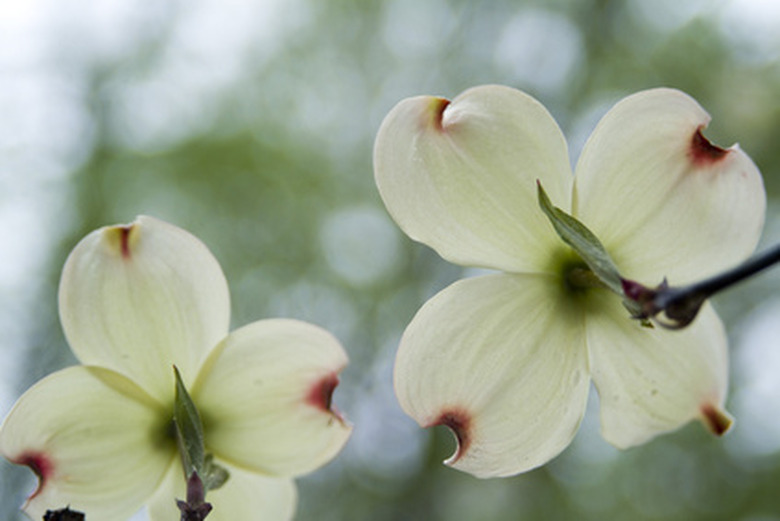South Carolina Flowering Trees
South Carolina is known for its scenery, from the mountains to the beaches. Included in that landscape are beautiful flowering trees. Dozens of varieties of flowering trees grow in South Carolina, but these six are some of the most beautiful and most common.
Saucer Magnolia (Magnolia x soulangiana)
Saucer Magnolia (Magnolia x soulangiana)
Sometimes called the tulip tree or the Japanese magnolia, the saucer magnolia blooms in early spring. The flowers are pink or purple, fading to white at the center, and when fully open, the blooms can range from 5 inches to as large as 10 inches in diameter. The height at full maturity varies from 20 to 30 feet, depending on the cultivar. saucer magnolia can be grown in USDA zones 5 through 8. It prefers full sun to partial shade, with moist, well-drained and slightly acid soil.
Southern Magnolia (Magnolia grandiflora)
Southern Magnolia (Magnolia grandiflora)
Say the word 'magnolia,' and the southern magnolia is the tree most likely to come to mind. It is sometimes called the evergreen magnolia, bull bay or big laurel. The leaves are large and leathery, dark green on top and light green or rust-colored on the underside. The large flowers are creamy-white and very showy as well as fragrant, and appear from roughly April through June. A well-established tree can grow as tall as 60 to 90 feet. southern magnolias grow in USDA zones 7 to 9.
Sweetbay (Magnolia virginiana)
Sweetbay (Magnolia virginiana)
Another member of the magnolia family, the sweetbay is also called the swamp magnolia. It looks much like the southern magnolia, but is smaller, with heights ranging from 10 to 60 feet. The leaf is small, only three to five inches long, and is a light gray green on top with a lighter underside. Sweetbay blooms from late spring to late summer, with creamy-white flowers with a lemony scent. It is found in USDA zones 5 to 9, and prefers moist to wet soil.
Crapemyrtle (Lagerstroemia indica)
Crapemyrtle (Lagerstroemia indica)
Although there are many varieties of crapemyrtle, few grow in the United States. The common crapemyrtle, widely found in the southeastern states, was introduced in the 1740s. The crapemyrtle needs at least six hours of full sun to flower well, and they are very drought tolerant once established. crapemyrtle is hardy in USDA zones 7 to 9.
Flowering Dogwood (Cornus florida)
Flowering Dogwood (Cornus florida)
The dogwood is a small tree, reaching about 30 feet in height, and when mature may be wider than it is tall. It blooms in early spring. The 'flowers' may be white or pink, and are actually bracts that surround the small greenish-flowers at the center. There are four bracts, with a slightly cupped shape and a small notch at the end. The dogwood does best in moist, acidic soil, with protection from afternoon sun and away from intense heat sources. Flowering dogwoods are hardy in USDA zones 5-9.
Eastern Redbud (Cercis canadensis)
Eastern Redbud (Cercis canadensis)
The eastern redbud is a small tree with spreading branches, reaching up to 30 feet tall with a similar spread. It is one of the earliest flowering trees, producing masses of purple-pink flowers in early spring before the leaves appear. Although it can grow in full sun, the redbud prefers partial shade in hot, dry areas. Although moist, well-drained soil is ideal, it will grow in almost any type of soil as long as it has good drainage. The eastern redbud is hardy to USDA zones 5 and 6.
